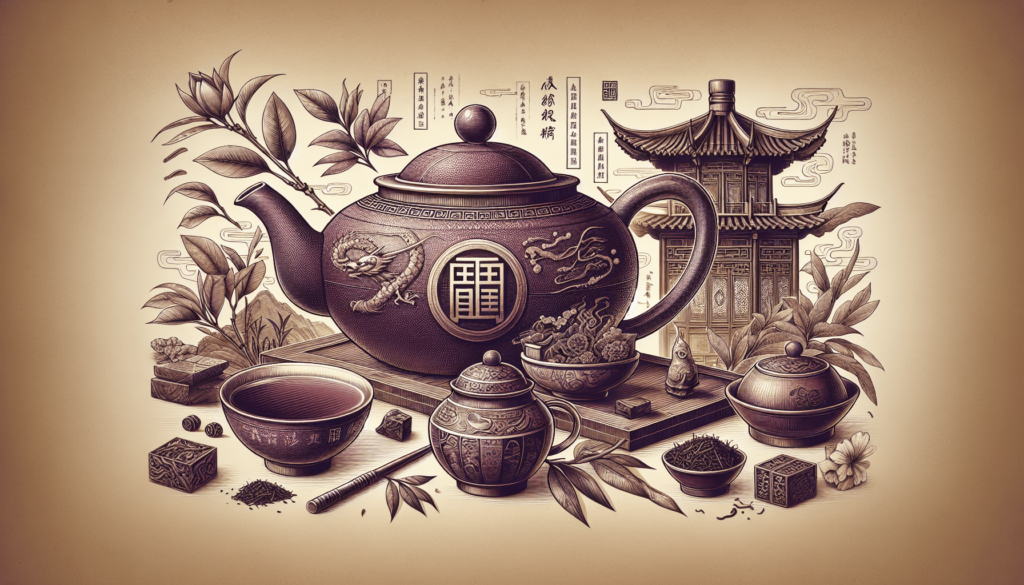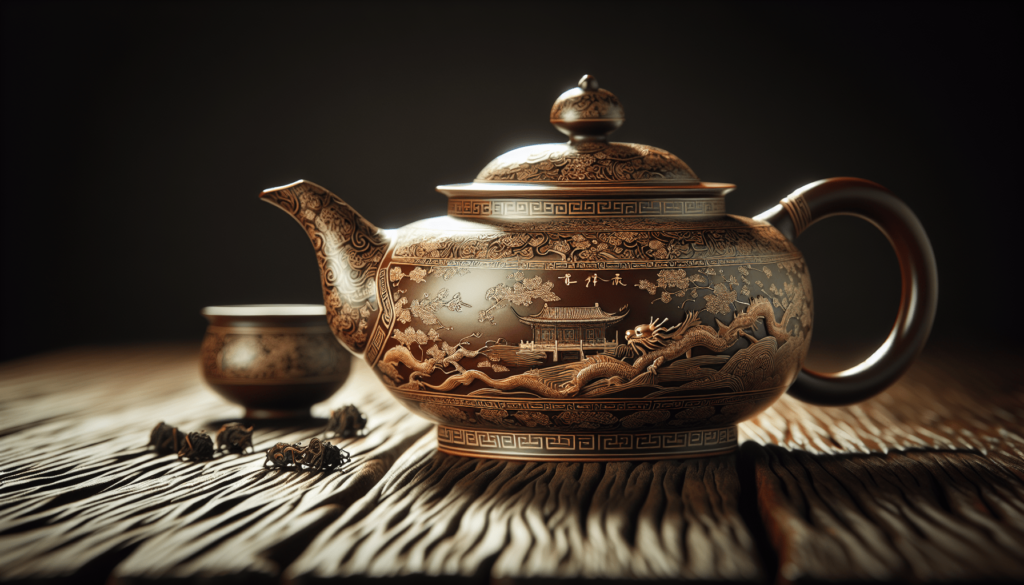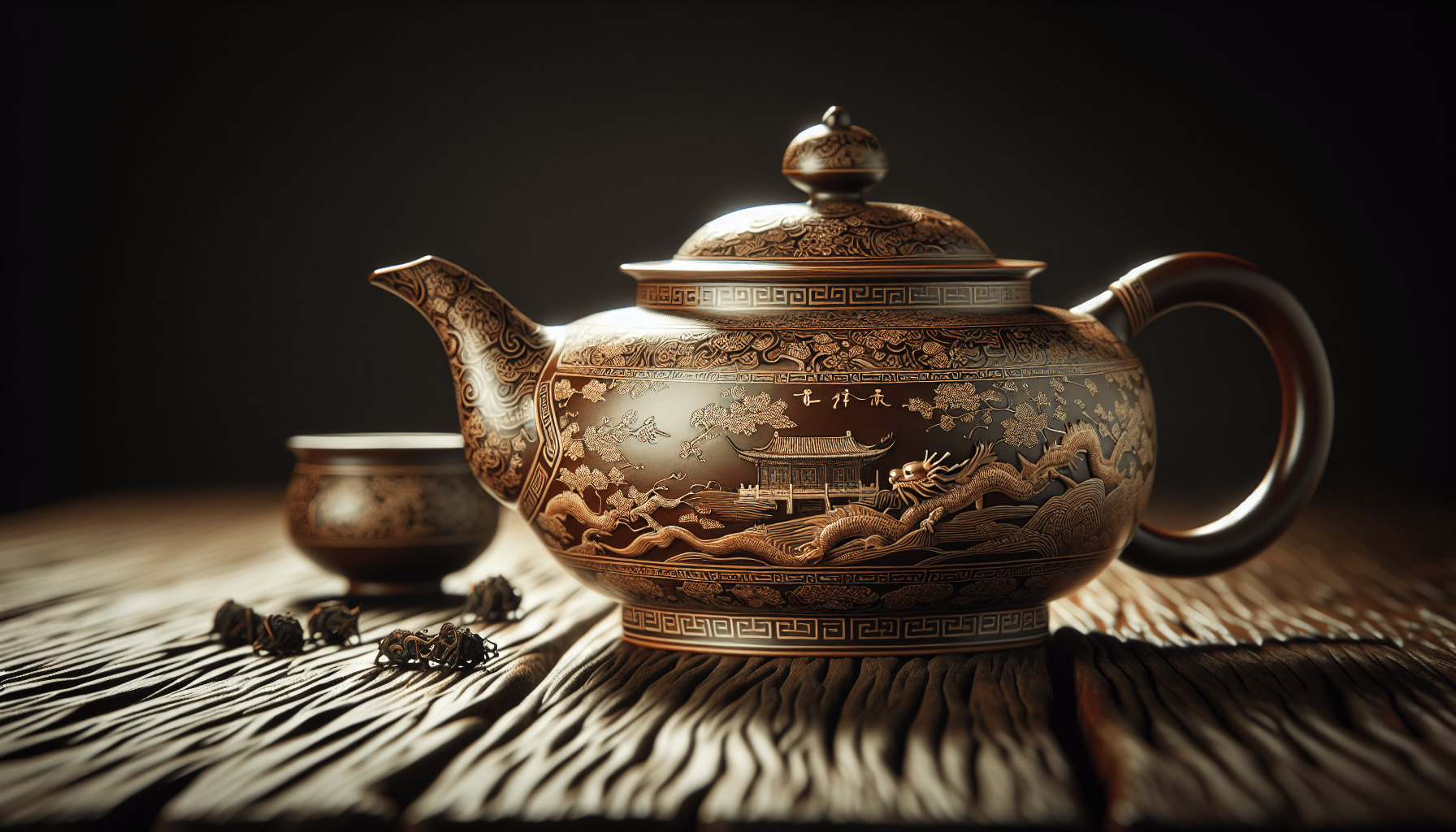Imagine stepping into a world steeped in history and filled with delicate traditions. As you delve into the rich tapestry of Chinese tea culture, you embark on a journey that takes you back thousands of years. From the meticulous art of tea brewing to the symbolism behind each variety, every sip becomes a delightful exploration of ancient Chinese customs and beliefs. Prepare to be captivated by the artistry, grace, and profound significance of Chinese tea culture.

History of Chinese Tea
Origin of tea in China
Tea has a long and rich history in China, dating back thousands of years. Legend has it that Emperor Shen Nong, a renowned Chinese herbalist, discovered tea by accident in 2737 BCE. While boiling water under a tea tree, some leaves happened to fall into the pot, resulting in a delightful aroma. Curiosity got the best of Emperor Shen Nong, and he decided to taste the infused water. Thus, tea was born.
Tea during the Tang Dynasty
During the Tang Dynasty (618-907 CE), tea enjoyed widespread popularity and underwent significant development. It became a beverage of choice among the upper class and intellectuals. The Tang Dynasty saw the rise of tea houses and tea preparation rituals. The Chinese tea ceremony, which emphasized the harmony between man, nature, and tea, gained prominence during this era.
Growth of tea trade during the Song Dynasty
The Song Dynasty (960-1279 CE) witnessed further advancements in tea culture. Tea trade flourished, and new methods of tea processing were introduced. Loose-leaf tea became the preferred choice, as it allowed for better appreciation of the tea’s aromas and flavors. The demand for tea grew, and tea trade routes extended beyond China’s borders, reaching neighboring countries such as Japan and Korea.
Different Types of Chinese Tea
Green tea
Green tea is the most commonly consumed type of tea in China. It is unoxidized and retains its vibrant green color. Chinese green teas are known for their fresh, grassy flavors and delicate aromas. Some famous varieties include Longjing (Dragon Well) from Hangzhou and Bi Luo Chun from Jiangsu Province.
Black tea
Black tea, also known as red tea in China, goes through a process of full oxidation, resulting in a rich, robust flavor and dark color. Chinese black teas are often malty and have notes of chocolate and fruit. Lapsang Souchong, produced in the Wuyi Mountains, is a renowned Chinese black tea with a smoky flavor.
Oolong tea
Oolong tea falls between green and black teas in terms of oxidation. It showcases a wide range of flavors, from floral and fruity to roasted and nutty. Famous oolong teas include Tie Guan Yin, known for its orchid-like fragrance, and Da Hong Pao, one of the most expensive teas in the world.
White tea
White tea is the least processed of all tea types, with minimal oxidation. It has a delicate flavor profile, often described as light, subtle, and slightly sweet. Silver Needle, made exclusively from young tea buds, is a popular Chinese white tea known for its refreshing taste and floral aroma.
Pu-erh tea
Pu-erh tea is a unique type of tea that undergoes post-fermentation, resulting in a rich, earthy flavor and dark color. It is often compressed into cakes or bricks for aging, which enhances its complexity and smoothness over time. Pu-erh tea is highly regarded for its potential health benefits and is cherished by collectors.
Teaware and Preparation
Yixing teapots
Yixing teapots, made from clay found in the Yixing region of Jiangsu Province, are highly prized by tea connoisseurs. The porous nature of the clay allows the teapot to absorb the flavors and aromas of the tea, enhancing the overall experience. Yixing teapots are renowned for their craftsmanship and are considered works of art.
Gaiwan
A gaiwan is a lidded bowl used for steeping and drinking tea. It consists of a bowl, a lid, and a saucer. Gaiwans offer versatility and control over steeping times, making them ideal for appreciating the nuances of Chinese teas. They are commonly used in traditional tea ceremonies and are popular among tea enthusiasts worldwide.
Tea ceremony tools
Chinese tea ceremonies often involve an array of specialized tools. These can include tea scoops, tongs, tea trays, and tea pet figurines. Each tool serves a specific purpose in the preparation and presentation of tea, adding to the overall beauty and elegance of the ceremony.
Tea brewing techniques
Chinese tea brewing techniques vary depending on the type of tea being prepared. Common methods include Gongfu-style brewing, which involves multiple short infusions in small teapots, and grandpa-style brewing, where tea leaves are steeped directly in a tall glass. Each technique is designed to bring out the unique characteristics of the tea and ensure a satisfying cup.
Health Benefits of Chinese Tea
Antioxidant properties
Chinese teas, especially green teas, are known for their high levels of antioxidants. These compounds help to neutralize harmful free radicals in the body, reducing the risk of various diseases and promoting overall health and well-being.
Boosted metabolism and weight loss
Certain types of Chinese tea, such as green tea and oolong tea, have been linked to increased metabolism and weight loss. The natural compounds found in these teas can help to burn fat and boost energy expenditure, making them valuable additions to a healthy lifestyle.
Lower risk of heart disease
Regular consumption of Chinese tea has been associated with a reduced risk of heart disease. Tea’s natural compounds, such as catechins and flavonoids, can help to lower cholesterol levels, promote healthy blood pressure, and improve cardiovascular health.
Improved mental alertness and focus
The caffeine content in Chinese tea, coupled with the presence of amino acids, can provide a gentle and sustained boost in mental alertness and focus. Unlike coffee, tea’s caffeine is released gradually, resulting in a more balanced and prolonged effect.
Promotes overall well-being
Chinese tea is often revered for its calming and soothing effects. It can help to alleviate stress, improve digestion, and support the immune system. Regular tea drinking is seen as a way to restore balance and promote a harmonious mind-body connection.

Etiquette and Traditions
Tea as a symbol of hospitality
In Chinese culture, offering tea to guests is a sign of hospitality and respect. Serving tea is seen as a way to establish a warm and welcoming atmosphere, creating a sense of harmony and connection between hosts and guests.
The art of serving tea
Chinese tea ceremonies involve intricate rituals and gestures that have been refined over centuries. From elegantly pouring the tea to gracefully holding the teacup, every movement has symbolic meaning and contributes to the overall aesthetic experience.
Proper tea tasting techniques
Tea tasting in China is a sensory experience that engages sight, smell, and taste. The appearance of the tea leaves, the aroma of the infused liquor, and the flavors that unfold on the palate all play a role in appreciating the tea’s quality and unique characteristics.
Tea ceremonies and their significance
Tea ceremonies hold deep cultural significance in China. They are not only occasions for tea preparation and consumption but also opportunities for reflection, meditation, and social bonding. Tea ceremonies embody the values of mindfulness, harmony, and appreciation for nature.
Regional Variations
Famous tea-producing regions
China is home to various regions renowned for their tea production. Some notable areas include:
- Hangzhou in Zhejiang Province, known for producing Longjing (Dragon Well) green tea
- Wuyishan in Fujian Province, famous for its oolong teas, such as Da Hong Pao and Tie Guan Yin
- Yunnan Province, where the famous Pu-erh tea is grown and processed
Notable regional tea traditions
Each tea-producing region in China has its own unique customs and traditions associated with tea. For example, in Hangzhou, tea is traditionally prepared in a glass teapot with fresh spring water, allowing the beauty of the tea leaves to be fully appreciated. In Wuyishan, tea ceremonies often involve the use of small, clay teapots, emphasizing the connection between the tea, the pot, and the surrounding nature.
Tea festivals and celebrations
China celebrates various tea-related festivals throughout the year, showcasing the diversity and cultural significance of tea. The Qingming Festival, also known as Tomb-Sweeping Day, involves paying respects to ancestors while enjoying tea and nature. The Mid-Autumn Festival, or Moon Festival, is another popular occasion where families gather to drink tea and appreciate the full moon.
Famous Chinese Tea Houses
Lao She Teahouse in Beijing
The Lao She Teahouse, named after the renowned Chinese writer Lao She, is a historic tea house located in Beijing. It embodies the charm and elegance of traditional Chinese tea culture, offering a wide selection of teas, live performances of traditional Chinese arts, and an authentic tea house ambiance.
Huxinting Teahouse in Shanghai
Situated in the picturesque Yuyuan Garden, the Huxinting Teahouse is one of Shanghai’s most iconic tea houses. Established in 1855, it captures the essence of classical Chinese teahouse architecture and provides visitors with a serene retreat from the bustling city. The teahouse is famous for its delicate snacks and premium teas.
Louwailou Teahouse in Hangzhou
The Louwailou Teahouse, located near West Lake in Hangzhou, is a beloved destination for tea enthusiasts. With its stunning lake views and elegant surroundings, the teahouse offers a tranquil setting for enjoying a cup of fragrant Longjing tea. Louwailou Teahouse has a rich history dating back over a century, and it continues to attract locals and tourists alike.
Preservation of Chinese Tea Culture
Efforts to safeguard tea traditions
Various organizations and individuals in China strive to preserve and promote the country’s tea traditions. They work towards documenting and protecting ancient tea knowledge, supporting tea farmers and artisans, and raising awareness about the cultural and historical importance of Chinese tea.
Promotion of tea education
Tea education has become increasingly popular in China, with institutions offering courses and certifications in tea-related subjects. These programs aim to deepen individuals’ understanding of tea, its production processes, and the art of tea appreciation. They play a vital role in passing down knowledge to future generations.
Conservation of ancient tea gardens
China boasts many ancient tea gardens that have been cultivated for centuries. Efforts are being made to protect these precious ecosystems, as they are not only vital for tea production but also serve as natural habitats for a variety of plant and animal species. Conservation initiatives focus on sustainable farming practices and preserving biodiversity.
Modern Influence of Chinese Tea Culture
Tea tourism in China
Tea tourism has gained popularity in recent years, with travelers flocking to tea-growing regions to immerse themselves in Chinese tea culture. Visitors have the opportunity to witness tea processing firsthand, participate in tea ceremonies, and explore the scenic beauty surrounding tea plantations.
Popularity of Chinese tea worldwide
Chinese tea has captivated the taste buds of tea enthusiasts around the world. The unique flavors, cultural significance, and health benefits associated with Chinese teas have contributed to their global popularity. Today, Chinese teas can be found in tea shops and households worldwide, delighting tea lovers with their diversity and quality.
Integration of tea in modern lifestyles
Chinese tea culture continues to thrive and adapt to modern lifestyles. From tea tastings and workshops in urban areas to the incorporation of tea into health and wellness practices, tea has become a symbol of relaxation, mindfulness, and a holistic approach to living. Chinese tea blends seamlessly with contemporary society, offering a way to stay connected to tradition while embracing the present.
Recommended Books and Resources
The Classic of Tea by Lu Yu
Considered the definitive guide to tea by many, “The Classic of Tea” was written by Lu Yu, a scholar and tea connoisseur during the Tang Dynasty. In this ancient text, Lu Yu explores the origins, cultivation, preparation, and appreciation of tea, providing invaluable insights into Chinese tea culture.
The Tea Enthusiast’s Handbook by Mary Lou Heiss
“The Tea Enthusiast’s Handbook” is a comprehensive guide that covers all aspects of tea, from its history and cultivation to brewing techniques and the health benefits of different tea types. Packed with information and beautiful illustrations, this book is a valuable resource for anyone seeking a deeper understanding of Chinese tea.
Tea: History, Terroirs, Varieties by Kevin Gascoyne
“Tea: History, Terroirs, Varieties” offers a global exploration of tea, including its origins in China. Authored by Kevin Gascoyne, a renowned tea taster and educator, this book delves into the different tea regions, the characteristics of tea cultivars, and the influence of terroir on tea production. It is a must-read for tea enthusiasts seeking in-depth knowledge of Chinese tea and its global impact.
In conclusion, the ancient traditions of Chinese tea culture have shaped the way tea is grown, prepared, and appreciated around the world. From its origins in China to its global popularity today, Chinese tea continues to captivate and inspire tea lovers everywhere. Whether enjoying a cup of fragrant green tea, participating in a traditional tea ceremony, or exploring the rich history of Chinese tea houses, embracing Chinese tea culture offers a journey into centuries-old traditions and a deeper connection to nature, community, and oneself.

